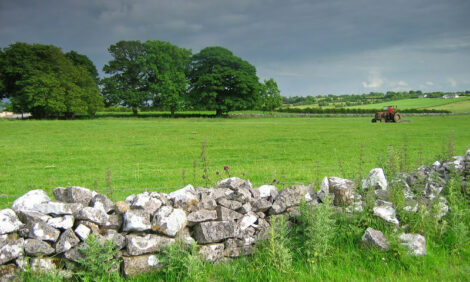



Mowing In Rain Controls California Thistle
NEW ZEALAND - For years farmers have had anecdotal evidence that mowing pasture in the rain helps to reduce the abundance of Californian thistle (Cirsium arvense), which is the most destructive pastoral weed in New Zealand. Now, research has provided quantitative evidence to show that mowing in the rain really works, as well as uncovering a potential biological basis for the effect.This work which is the latest product of twenty years of collaborative research on weed control methods by a team of scientists from the Crown Research Institutes AgResearch and Landcare Research, the Bio-Protection Research Centre, industry organisations and community groups will feature at the AgResearch exhibit at the National Agricultural Fieldays at Mystery Creek on 15-18 June 2011.
Project leader Dr Graeme Bourdôt, Senior Scientist at AgResearch Lincoln, says the finding emerged from a national survey of diseases found on Californian thistle, funded by Meat and Wool NZ (now Beef + Lamb NZ). The team collected samples from hundreds of farms throughout New Zealand and found several pathogens of particular interest.
One of these, the vascular wilt fungus Verticillium dahliae, a pathogen that causes diseases in many crops, was common on the thistle in this survey. The fungus produces spores inside the thistle that are released by mowing, dispersed by splashing rain and then gain entry into other thistle plants through wounds.
The team thought that the spread of the fungus by splashing rain and wet mower blades could be the explanation for the mowing in the rain phenomenon.
To investigate, Beef + Lamb NZ funded an experiment on twelve farms throughout New Zealand over two years. The experiment showed that mowing in the rain produced a 30 per cent reduction in the ground cover of thistle in the spring compared to mowing in dry conditions.
The team also sampled for the wilt fungus, but found no correlation between its abundance and the mowing effect. It may be that more samples were needed to show the effect, or it is possible that a combination of pathogens contributes to the effect, or even that it is caused by a different pathogen altogether.
For now, the biological basis of the mowing in the rain effect remains unproven. However, the research does show conclusively that mowing in the rain works to reduce Californian thistle abundance. As Dr Bourdôt says: “It is a simple technique that farmers can use right now at little cost.”
The team’s next step is to apply the fungus to some plots and not to others, and then mow the paddocks in the rain and in the dry. If the fungus is found to be the reason behind the mowing in the rain effect, it could potentially be formulated and marketed as a biological herbicide that farmers would apply when they mow paddocks in the rain to increase the effect.
TheCattleSite News Desk


